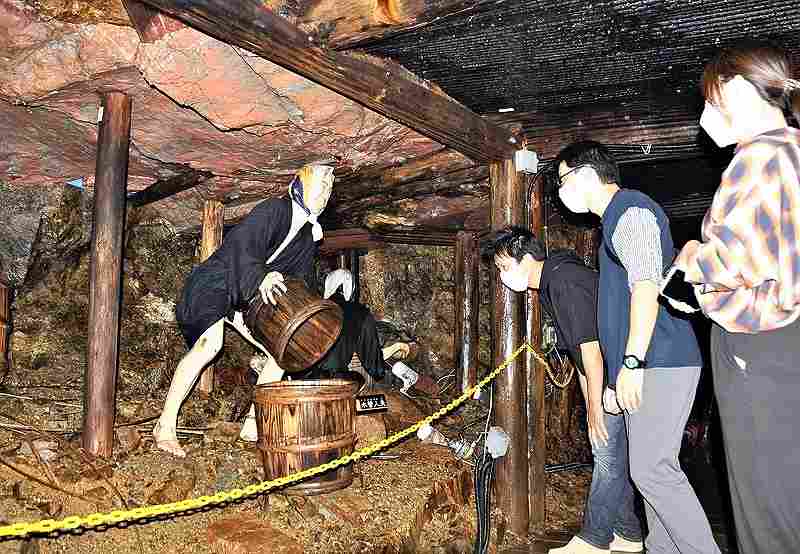
A diorama showing mining activities at Ashio Copper Mine features life-size figures modeled on miners, including one working with clenched teeth.
11:50 JST, November 16, 2022
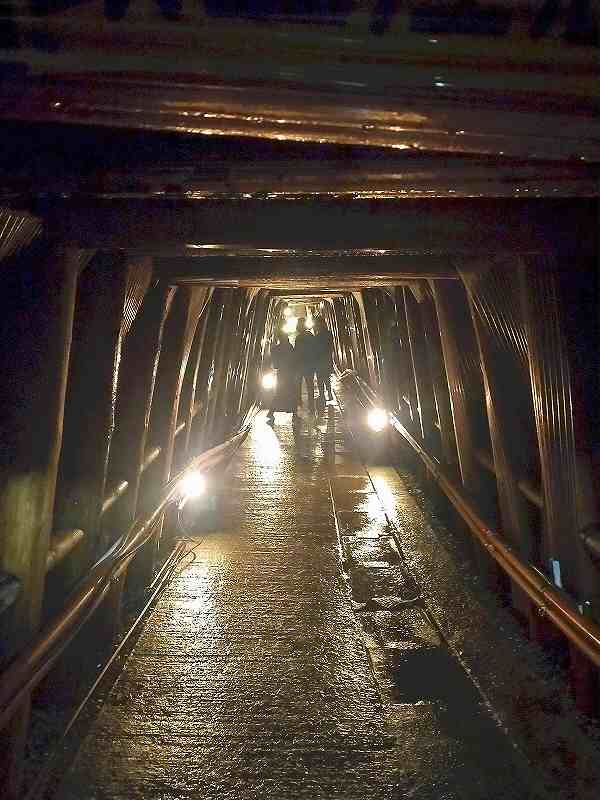
A dimly lit tunnel of the mine
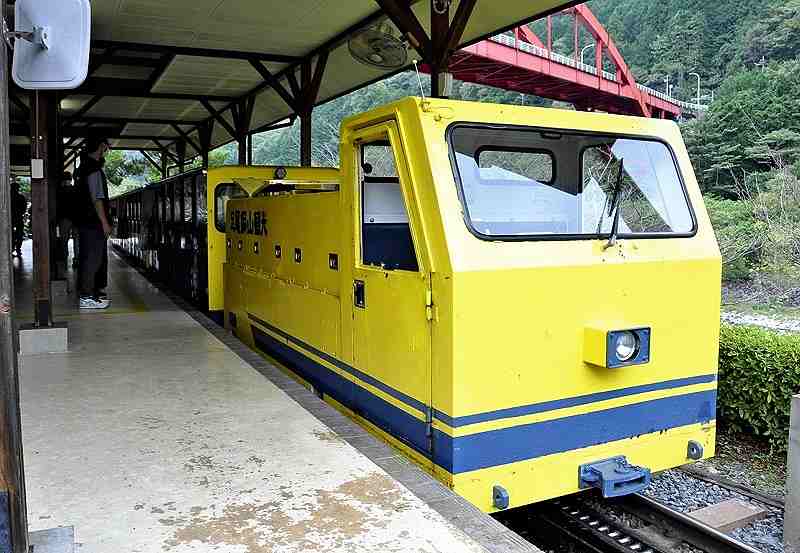
A trolley train for entering the mine tunnel
NIKKO, Tochigi — A retro-looking trolley train takes visitors inside the Tsudoko tunnel, designated a historical site by the government. It is dimly lit, and the air feels cold — the temperature inside the tunnel apparently stays around 10 C throughout the year. Drops of water fall from the ceiling. After traveling about 150 meters, the minecart arrives at an exhibition area.
This is the Ashio Copper Mine, located near the border of Tochigi and Gunma prefectures. Now a tourist attraction, the mine was discovered by a farmer in 1610 and operated directly by the shogunate in Edo, the old name for Tokyo.
In its heyday during the Edo period (1603-1867), about 1,300 tons to 1,500 tons of copper were reportedly extracted from the mine. It was closed in 1973 due to depletion of the copper veins. There are 1,234 kilometers of tunnel at the mine, almost the equivalent distance between Tokyo and Fukuoka. Part of the tunnels are now open to visitors.
The exhibition area is split into four sections, respectively focusing on the Edo period, the Meiji era (1868-1912), the Taisho era (1912-26) and the Showa era (1926-89). One of the highlights is a full-size diorama using figures to replicate mining activities. One of the life-size models wears a tenugui cloth around his face and is about to push a cart loaded with copper ore, while another portrays a miner who, with clenched teeth, empties a heavy wooden bucket. Each and every figure wears a different expression and reminds us of the difficulties the miners faced. There are even figures inside some wall niches alongside the trolley tracks, to show how miners worked in narrow spaces.
“They’re difficult to notice, but I hope you will find them and appreciate them,” said Satoshi Ozaki, the deputy director of the copper mine’s tourist office.
Copper ores with amethyst and malachite are also on display and feature eye-catching beautiful colors. Any copper dug out would usually be found with other elements like iron or sulfur.
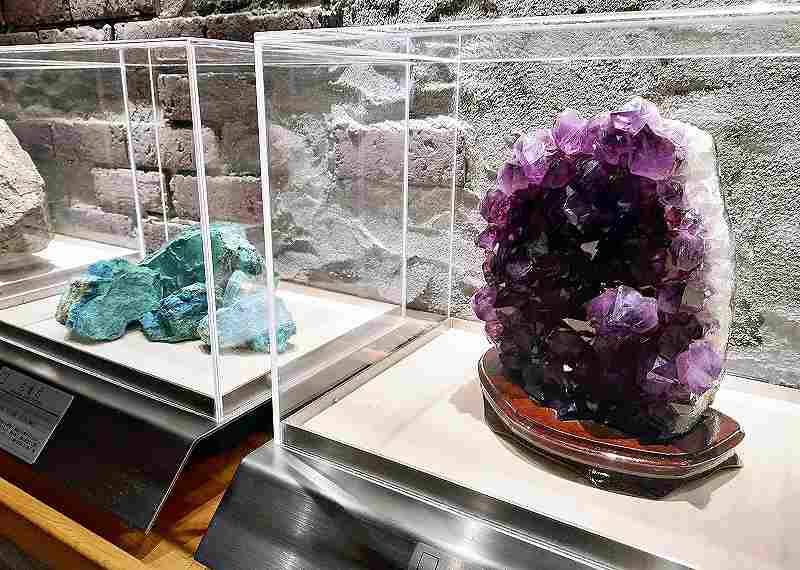
Malachite, left, and amethyst dug out from the mine
A private company took over the operation of the mine during the Meiji era. It was hailed as the top copper source in the country and contributed to Japan’s modernization. However, it also led to what is considered Japan’s first environmental pollution incident.
The town outside the mine was very quiet. Apparently, the town used to be vibrant as miners and their families used to live there. The contrast between the town now and the vitality conveyed by the exhibits underground seemed to symbolize the changes to the town.
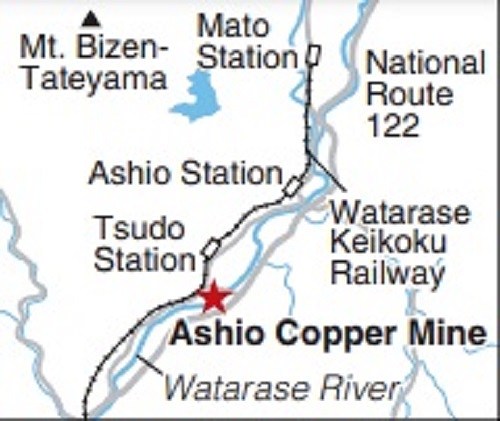
Ashio Copper Mine
The former Ashio Copper Mine opened as a tourist attraction in 1980, seven years after the mine’s closure. It is a five-minute walk from Tsudo Station on the Watarase Keikoku Railway.
Address: 9-2 Tsudo, Ashio, Nikko, Tochigi Prefecture
Hours: 9 a.m. to 5 p.m. (Last admission at 4:15 p.m.)
Admission: ¥830 for adults, ¥410 for elementary and junior-high school students. Pets are not allowed.
Related Tags
"Features" POPULAR ARTICLE
-

Sanrio to Open Museum in Yamanashi Pref. Dedicated to Founder, Exhibits Include Hello Kitty, Other Characters
-

Autumn Foliage Surrounds Visitors to Tokyo’s Showa Kinen Park
-

My Daughter No Longer Speaks to Me, But I Want to See Her and My Grandchild
-

Kumamoto: Public Bath Refurbished as Library Where You Can Chat, Take Photos
-

Frozen Vegetables: Demand Rises for Convenient, Tasty Domestic Produce
JN ACCESS RANKING
-

Tokyo Economic Security Forum to Hold Inaugural Meeting Amid Tense Global Environment
-

Keidanren Chairman Yoshinobu Tsutsui Visits Kashiwazaki-Kariwa Nuclear Power Plant; Inspects New Emergency Safety System
-

Imports of Rare Earths from China Facing Delays, May Be Caused by Deterioration of Japan-China Relations
-

University of Tokyo Professor Discusses Japanese Economic Security in Interview Ahead of Forum
-

Japan Pulls out of Vietnam Nuclear Project, Complicating Hanoi’s Power Plans

























